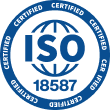B
u
s
i
n
e
s
s
,
I
m
p
a
c
t
,
C
o
n
f
i
d
e
n
c
e
,
I
n
t
e
l
l
i
g
e
n
c
e
,
in every language.
When multilingual complexity endangers business-critical communications, you need a true language partner. Working as an extension of your team, we localize high-risk content with the speed, precision and dedication required for your global success.





























